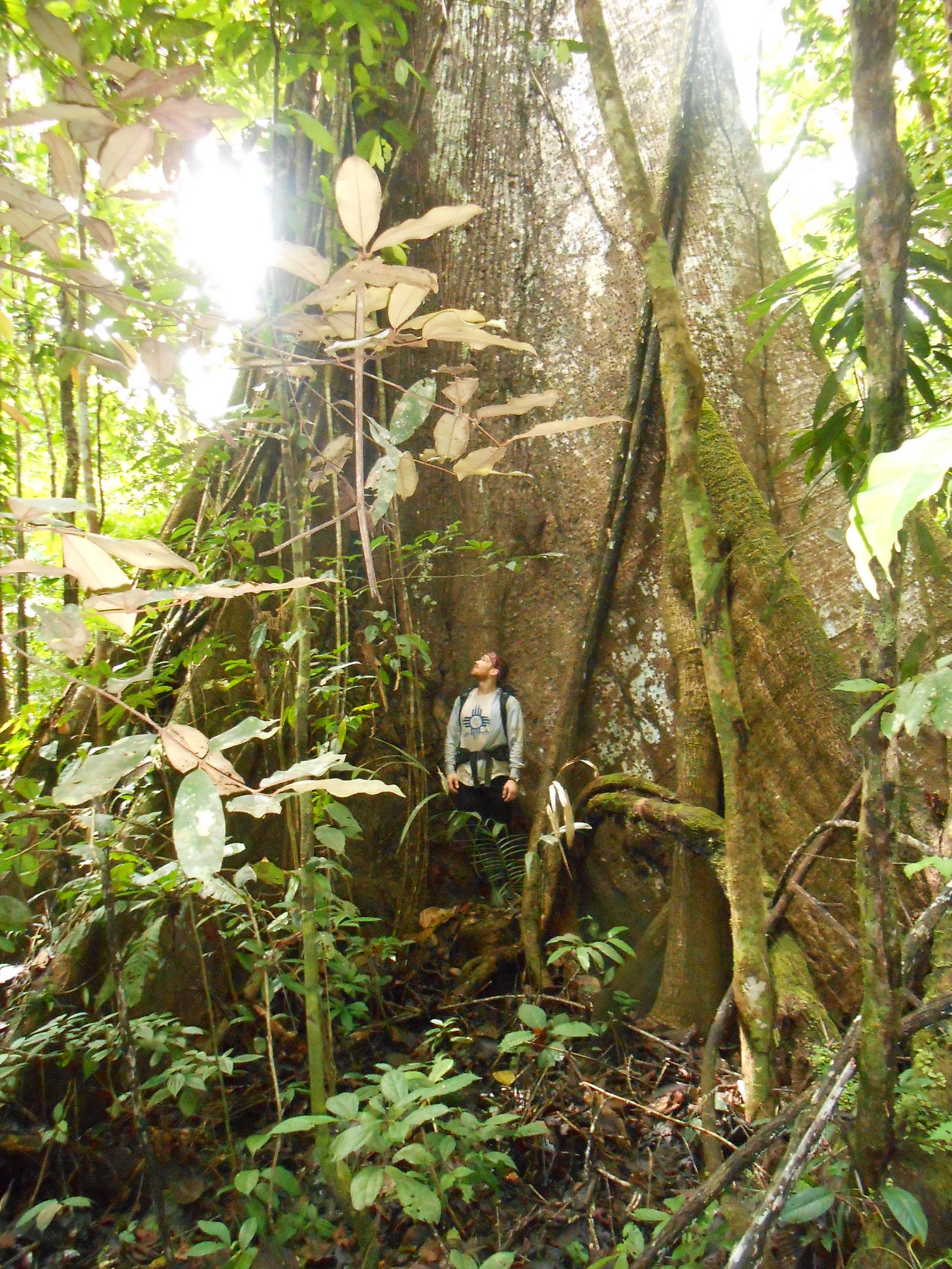Why have we not discovered intergalactic alien life yet?
Enrico Fermi posited that a series of events need to occur for such advanced civilizations to emerge. Life must exist, Life must evolve to sufficiently complex organisms without going extinct, those complex organisms must form a civilization, that civilization must become sufficiently complex without going extinct, and so on.
When we multiply the products of these probabilities, we get the probability of any given planet having a civilization of that threshold level of complexity. There is an astronomically large number of planets in the universe, yet we have not encountered any extraterrestrial life, raising the possibility that perhaps one of these probabilities is a pinch point in the ascent of civilizations.
Here we sit, chatting on the internet as a civilization of hominids that spans the globe and has advanced technology capable of sending signals to the stars. Yet, there is no indisputable evidence of extraterrestrial life, and so while we wait for reassurance that civilizations can be made sustainable with high probability, it’s worth evaluating our own world for possible weaknesses.
Nuclear weapons seem like one such weakness. After we advanced science to the point of splitting atoms and releasing extremely large amounts of energy in nuclear reactions, our world of primates did what primates tend to do: we made weapons. We hominids are notoriously tribal – it’s a blessing and a curse. Tribalism is a blessing as our tribalism helped us form groups that formed societies, but it is also a curse in that at some level we inevitably seek differences, draw lines in the continental or social sand, and succumb to our proclivity towards distrusting people on the other side of the line. Countries developed nuclear weapons and pointed them at each other in an act of deterrence, letting other countries know of their mutually assured destruction in the event somebody crosses the wrong line.
Nuclear weapons have been around for a brief 80 years, and thankfully we seem to understand their consequences well enough to be sufficiently deterred from using them. These remain a significant threat to human civilization, but it’s possible they are not the answer to the Fermi paradox.
Another possible answer is less operatic, more tragic: disease.
In nature, all populations of all organisms everywhere are finite and bounded by common constraints that ecologists know and study well. Some organisms deplete their resources or pollute their environment, resulting in an inhibition of conspecifics that limits their population sizes. Famine. Others, especially top predators like lions and wolves, are competing over resources but often that competition is more brutally lethal and animals die in acts of intraspecific aggression. War. Lastly, some organisms have abundant resources and relatively little aggression towards conspecifics, but as they become numerically abundant so too do their pathogens. Pestilence.
Trees in the tropics are an example of a community whose populations are believed to be regulated by disease. If find an old growth tree in a tropical rainforest, look around your feet. Below is an old kapok tree that my friend Jacob Socolar and I stumbled upon while running vegetation transects in remote stretches of the Peruvian Amazon.


An old kapok tree like the one above has probably been alive for hundreds of years, and each year the tree reproduces and drops a rain of seeds onto the forest floor below. When you look at the floor, you can find a carpet of seedlings – tiny, baby kapok trees that are attempting to grow larger and reach the canopy. However, almost none of these seedlings are likely to survive. Why not?
It turns out, the old tree harbors an entire assemblage of species-specific arthropods and fungal pathogens. As the seeds rain down from the canopy so too do the species-specific arthropods and pathogens. While the parent tree might have discovered productive soils or aspects of a hill to which the species is well-adapted, seedlings of the same species of tree face an uphill battle as they try to reach the canopy while being bombarded with pathogens from their parents.
Humans are not trees, but nor are we lions and wolves. It’s not Malthusian to consider the frictions our population faces and will face as we continue to advance our civilization. Rather, I consider it a preemptive step towards civilizational security to consider the risks we face. Historically, human populations have been affected by all of the major mechanisms that mediate the abundances of species in nature. As cities rose, so too did infectious diseases until the aquifer exported feces from our towns, increasing the capacity of our cities. The Black Death killed one-third of Europe but slowly we learned to eradicate rats and mice from our homes. There have been famines from droughts and changes to the climate, there have been wars, and there have been diseases.
However, I’ve always felt that humans are reasonably good at knowing the importance of food and fresh water, and fearing the consequences of war. Most importantly, major aspects about the management of our food, water, and risk of war is in the hands of our nation’s leaders who explicitly consider the game theoretical consequences of their actions. The science of disease, meanwhile, is a game whose players often lack the self-awareness of their little game, and whose little game is not aligned with the larger games of national security.
Enter Drs. Ron Fouchier, Anthony Fauci, and Francis Collins, stage left.
At a time in 2011 when bird flu was not causing a pandemic, Dr. Fouchier thought it would be impactful to breed the bird flu to be better able to infect mammals, thereby creating a mammalian infectious bird flu capable of causing a pandemic. Of course, that bird flu pandemic of 2011 never happened, so all Dr. Fouchier really did was conjure into existence a variant of the bird flu that risked killing millions. There were no treatments, no vaccines, no positive benefits really of any kind that resulted from this work, except Dr. Fouchier receiving attention, fame, tenure, and funding to do more research. Other scientists saw the fame of Dr. Fouchier, published in Science magazine and beyond, and they hatched research strategies to make other pathogens more infectious to secure their own media cycle and the payoff it provides.
Our civilization has been very generous in its funding of science and in its deference of the regulation of science to scientists. Drs. Fauci and Collins sat at the heads of NIAID and NIH, respectively, as Dr. Fouchier endangered us all for some citations that advanced his scientific career. In 2014, the Obama administration, representing the public interest, saw major risks in this ‘gain of function research of concern’ and consequently paused its funding. The moratorium was no fun for scientists who had plans to make other dangerous viruses and draw our attention with their own harrowing daredevil stunt in which virologists built a bomb that didn’t exist for the purposes of later learning how to defuse it (if all goes well).
Some of these scientists, like Dr. Peter Daszak of EcoHealth Alliance, coordinated with NIH and NIAID while lobbying to overturn the moratorium. Such was a rational strategy, in some sense, for scientists like Daszak who were less risk-averse and more drawn to jackpots of fame and fortune. Daszak and others like him succeeded in lobbying for policy changes that overturned the cautionary moratorium from an elected official and opened the taxpayers’ funds to support science that benefited the scientists. Drs. Fauci and Collins used their authority as heads of NIAID and NIH to overturn the moratorium in 2017 with truly strange definitions enabling this research to continue. Translating their virological language to explosives, Drs. Fauci and Collins would not be considered “funding the construction of novel explosives” if the research was intended to learn how to defuse the nonexistent explosives or make armor against explosives. In other words, “funding novel explosives” isn’t done even if one funds novel explosives, insofar as there are other things we hope to test with those novel explosives.
I wish I were kidding, but that’s actually how scientists carved out space to keep playing their game. It was ludicrous at the time, but scientists who called this ludicrous were ostracized by the heads of health science funding.
People like Dr. Peter Daszak were delighted! Dr. Daszak wrote a proposal to make a new virological bomb: they would insert a furin cleavage site inside a bat SARS coronavirus, thinking (correctly) that such a modification can increase the host range and make these wildlife viruses better at infecting humans.
They would do this with the intentions of making vaccines, obviously, so by the language of Dr. Fauci it wasn’t “gain of function research of concern” (GOFROC). Why be concerned about a novel bomb if it’s being made to test currently undeveloped bomb-defusing scissors? Calm down, civilization, scientists would say. Peter Daszak believes he can create the scissors to defuse the civilization-threatening bomb he’s creating, and we’ll be sure to give him all our attention, citations, awards, and fame once he’s done!
In just two years after the moratorium on GOFROC was overturned, SARS-CoV-2 emerged in Wuhan as a novel bat SARS coronavirus containing a furin cleavage site found nowhere else in the sarbecovirus evolutionary tree. After years of looking in bats, pangolins, raccoon dogs, and cats, the only place we have found a furin cleavage site in a sarbecovirus is in the 2018 DEFUSE proposal conjured up by the remarkable imagination of Peter Daszak and colleagues.
Daszak’s colleagues were not in Buenos Aires, Cape Town, Sydney, Georgia, or Amsterdam. No, they were researchers at the Wuhan Institute of Virology, in the same city where SARS-CoV-2 emerged. As most who read this may know, my own research corroborates the laboratory origin of SARS-CoV-2 as we’ve documented evidence that the SARS-CoV-2 genome is far more consistent with an infectious clone than a wild coronavirus.
In other words, it appears as if the bomb of Daszak’s imagination was made, but the scissors to defuse it were not. The bomb went off.
As foretold in the arguments against GOFROC, a harrowing 20 million people died, 60 million people faced acute hunger, and 100 million kids were thrown into multidimensional poverty like seedlings underneath a Kapok tree suffering from the rain of their forebears. The only bright side in these dark times is that SARS-CoV-2 was a relatively benign pathogen compared to other pathogens out there that were also studied in this context.
Assume for the moment that it is a fact that SARS-CoV-2 emerged from a lab as a consequence of normal pre-COVID vaccine ‘bomb-defusing’ research (a very good assumption, in my estimation). This research began in 2011, stopped in 2014, resumed in 2017, and by 2019 it caused the worst pandemic in a century. In other words, that research has been conducted by academics for only 5 years and it already caused a historic pandemic that, had it been merely twice to thrice as bad, could well have overloaded our medical systems to the point where people die in the streets and we run the risk of societal breakdown.
Such is the catastrophic risk management of scientists stuck in a Nash equilibrium of their scientific games, where any unilateral deviation from the strategy of harrowingly risky research will yield the board to other scientists with fewer ethical guardrails. I don’t believe the risk of societal breakdown was discussed candidly in Daszak’s DEFUSE grant. Nor do I believe the heads of NIAID or NIH considered the possibility that a biological agent made by GOFROC could be misinterpreted as a bioweapon and that nuclear-armed countries that believe they are attacked by a biological weapon may respond with nuclear force. The narrow set of risks and payoffs considered by scientists in their management of GOFROC reveals how the games that scientists play differ materially from the games civilizations play.
We live in a civilization where science has created technology of such remarkable power across different disciplines that the slightest mistakes in one discipline risks triggering disasters from other disciplines’ technology and sending civilization tumbling backwards to disorder or even destruction. Fermi’s paradox looms large. The only guardrails against scientific mistakes are laws that often can’t keep up with the science, and science funders who are also caught up in the game for scientific fame.
A civilization capable of traveling across the galaxy, if it is physically possible, must surely be capable of even more severe accidents, misunderstandings, or misguided escalations than we are. If that civilization allows its scientists to take risks in a scientific system that rewards scientists in an almost Jackass-like fashion, allocating fame to whoever survives the most uncomfortably foolish stunt, then that civilization is not long for its world. We need science, but we also need assurances that science is aligned with the longer-term goals of humanity and not inevitably going to stumble upon Pandora’s box with the incentive to open it for fame and glory.
I believe we should widely fund basic and applied scientific research, and I also believe we should regularly evaluate novel technologies to assess their risks to our civilization. Whenever the risks exceed a threshold of local “oopsies” and become capable of killing people or, worse yet, introducing threats to national and global security, such research should be more closely monitored, regulated, and perhaps conducted only by people in institutions that have national security mandates. Neither Fauci nor his deputies at NIAID were qualified to assess whether or not the biological research they funded could trigger a nuclear response, and yet they were granted the deference to fund research capable of causing a world war or collapsing our society. Follow the Science? No thank you. Not without oversight.
We lucked out with SARS-CoV-2. Only 20 million people died. Cases peaked in unmitigated outbreaks at a population fatality rate and hospitalization rate that most medical systems could just barely withstand; any higher rates of hospitalization or fatality and we would’ve had people dying in wait of hospital beds creating unknown social and political instabilities. The virus has not (yet) triggered a more severe response other than skepticism, public outrage, and investigations. Our civilization remains intact despite a few ambitious scientists’ egotistical gamble to win fame and fortune at the risk of ending human civilization.
Rather than soft language about managing pathogens from all causes without attributing the laboratory origin of this one, I believe we’re wiser to stare down the laboratory origin so intently and somberly that we learn the critical lesson and never let this happen again. We’ve had 100 years of natural spillover that has not created a pandemic as bad as this one. We’ve had 80 years of nuclear weapons and have not had accidents like this. Not only should there be no (zero) laboratory accidents capable of ending our civilization, there should also not be systems of science funding and research that make risky research such a viable and alluring possibility.
SARS-CoV-2 leaves us no choice but to more closely regulate science and not leave to scientists alone these decisions that affect all of humanity. The Fauci Paradox tempts us to allow scientists to regulate science, to Follow the Science and Trust the Experts, but trusting the experts can lead us to our doom as scientists are so prone to short-term ambitions and so limited in their knowledge of other human affairs and longer-term objectives of civilization that, given the opportunity, they are likely to open Pandora’s box if it might result in an impactful paper or a Nobel Prize. I say this as a citizen and a scientist, as someone who studied wildlife virology in the same field as Peter Daszak pre-COVID, and who had a rude awakening during the COVID-19 pandemic.
The game theory of science and scientists is too small-minded and narrowly focused compared to the game theory of nation states. While nation states stare down the calculus conflict of escalation and mutually assured destruction, scientists chase their personal ambitions of fame and fortune in an effort to one-up prior work.
The Game of Science will inevitably pick the strategy to open Pandora’s box if it has some chance of rewarding an individual desperate for fame, and that strategy in the microscopic game of science can upend the macroscopic games of civilization. Rebutting Fermi’s paradox with a thriving civilization may require more clearly aligning the games, strategies, and payoffs of scientists with those of the taxpayers and nations that fund them.
Republished from the author’s Substack
Join the conversation:


Published under a Creative Commons Attribution 4.0 International License
For reprints, please set the canonical link back to the original Brownstone Institute Article and Author.









